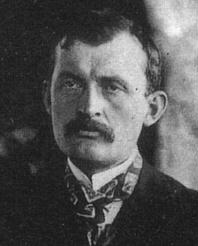
|
Born in Løten, Norway, on December 12, 1863, Munch began painting at the age of 17 in Christiania (now Oslo). A state grant, awarded in 1885, enabled him to study briefly in Paris. For 20 years thereafter Munch worked chiefly in Paris and Berlin. At first influenced by impressionism and postimpressionism, he then turned to a highly personal style and content, increasingly concerned with images of illness and death. In 1892, in Berlin, an exhibition of his paintings so shocked the authorities that the show was closed. Undeterred, Munch and his sympathizers worked throughout the 1890s toward the development of German expressionist art.
Perhaps the best known of all Munch's work is The Scream (1893, Nasjonalgalleriet, Oslo). This, and the harrowing The Sick Child (1881-86, Nasjonalgalleriet), reflect Munch's childhood trauma, occasioned by the death of his mother and sister from tuberculosis. Melancholy suffuses paintings such as The Bridge —in limp figures with featureless or hidden faces, over which loom the threatening shapes of heavy trees and brooding houses. Reflections of sexual anxieties are seen in his portrayals of women, alternately represented as frail, innocent sufferers or as lurid, life-devouring vampires.
In 1908 Munch's anxiety became acute and he was hospitalized. He returned to Norway in 1909 and died in Oslo on January 23, 1944. The relative tranquillity of the rest of his life is reflected in his murals for the University of Oslo (1910-16), and in his vigorous, brightly colored landscapes. Although his later paintings are not as tortured as his earlier work, a return to introspection marks his late self-portraits, notably Between Clock and Bed (1940, Munch Museet, Oslo).
Munch's considerable body of etchings, lithographs, and woodcuts is now considered a significant force in modern graphic art; the work is simple, direct, and vigorous in style, and powerful in subject matter. Few of Munch's paintings are found outside Norway. His own collection is housed in the Munch Museet.
|

